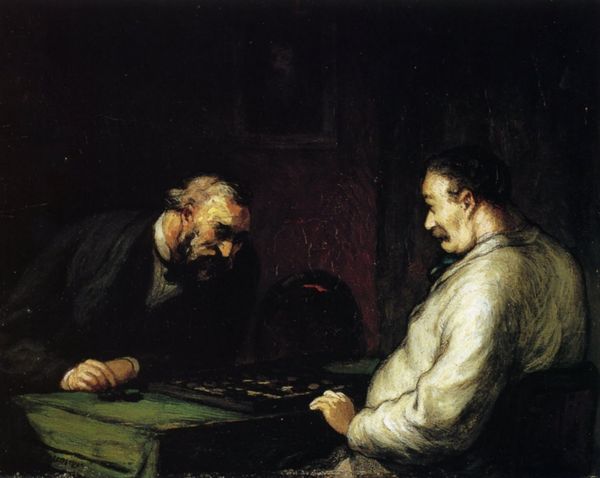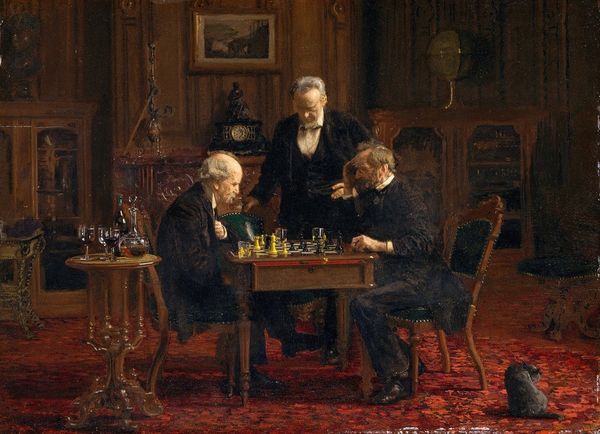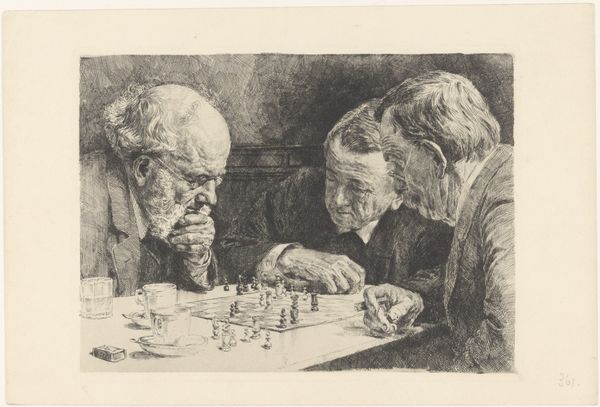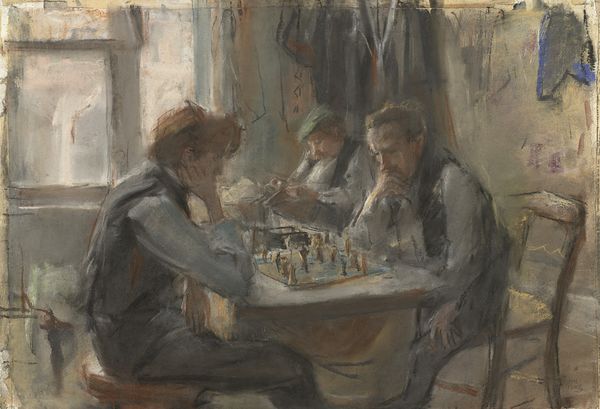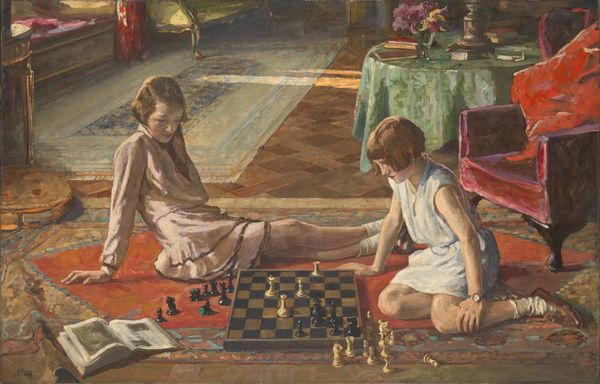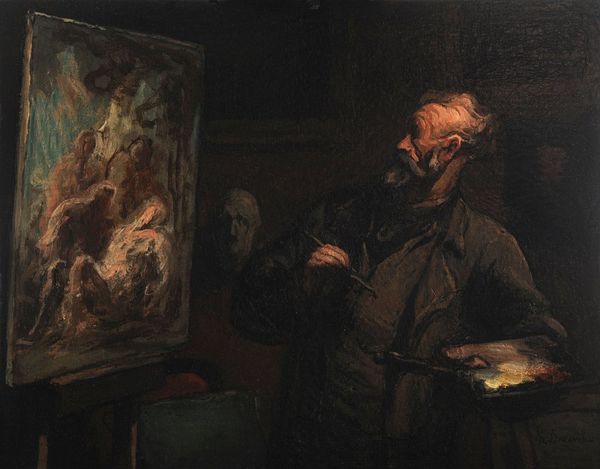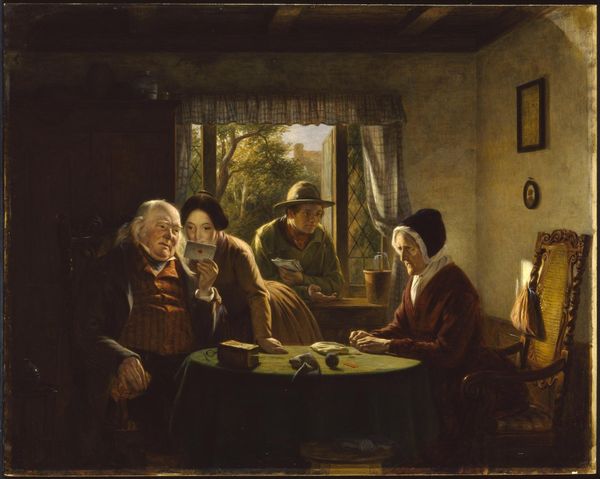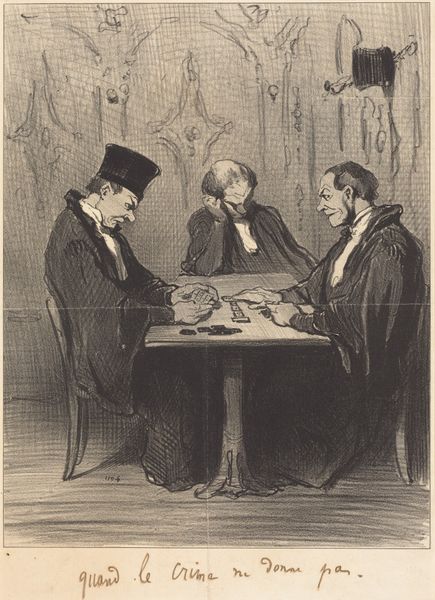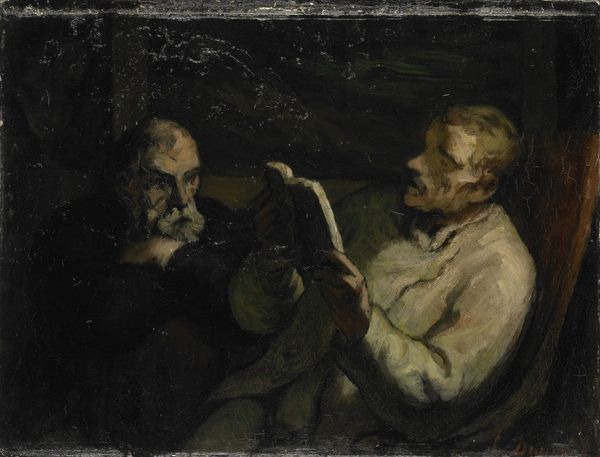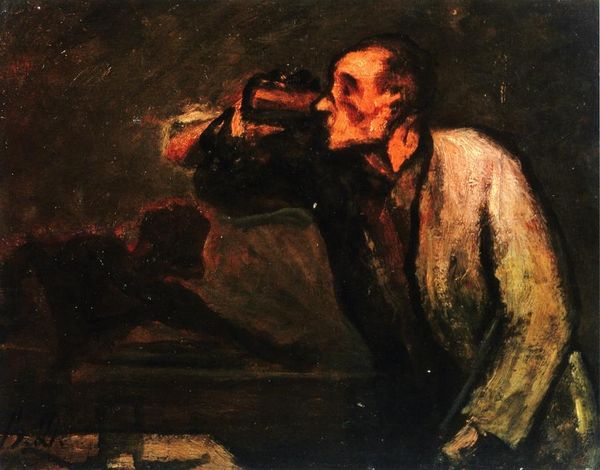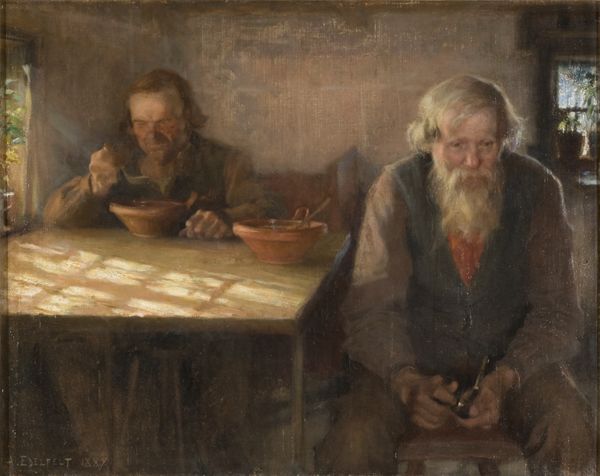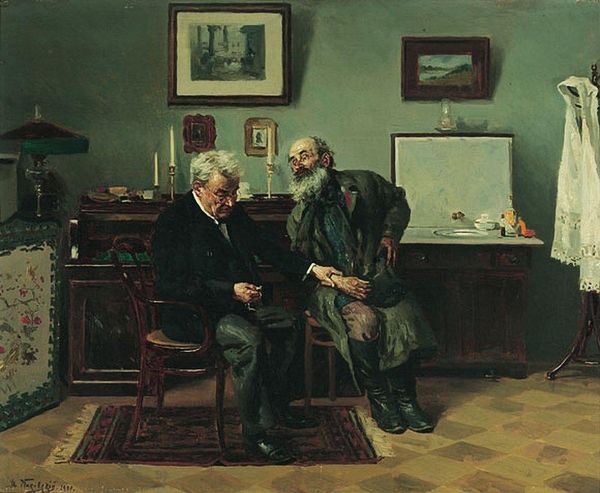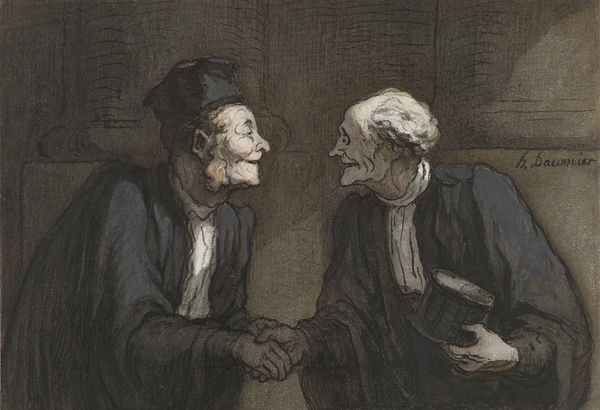
painting, oil-paint
#
portrait
#
figurative
#
painting
#
impressionism
#
oil-paint
#
oil painting
#
group-portraits
#
genre-painting
#
modernism
Copyright: Public Domain: Artvee
Curator: Before us hangs Honoré Daumier’s “Chess Players,” believed to have been painted between 1863 and 1867. The intimate scene really captures something essential, doesn’t it? Editor: It does. There’s a somber mood. It looks almost monastic in its focus. And the visible brushstrokes—you can practically feel the texture of the oil paint on canvas. The roughness speaks to something deeper about daily life and work. Curator: Absolutely. And thinking about the context—Daumier, a republican and satirist, creating this quiet, contemplative piece amidst the social upheaval of mid-19th century France. Chess here isn’t just a game; it's a stand-in for strategy, a battle of wits. Notice their concentration, heads bowed, deeply engrossed. It speaks volumes about their lived experience. Editor: The focus on the chessboard as a material object is striking, isn't it? The hand-hewn pieces, likely crafted by someone in Daumier's circle or observed in local artisan shops. Considering Daumier's own history making lithographs, it is not surprising he is also paying close attention to material qualities, how materials affect representation. There is such clear attention given to those small carved figures on the board, each holding unique possibilities. Curator: Good point. And I can't help but feel Daumier is suggesting chess is a microcosm for life’s struggles, even a veiled critique of power. He so often portrayed the working class, and this quieter, domestic scene offers another glimpse into the fabric of Parisian society, even if veiled behind metaphor. Editor: There is that— but the very visible facture of the oil paint and expressive lines make the chess players, in all their focused solemnity, relatable through the tangible. The materiality makes it real; there’s nothing pretentious or elevated about the scene itself. They seem like players of small means who may make their own chessboards, using found materials, just like the paintings, themselves. Curator: An interesting reading, one rooted firmly in the material realities of Daumier's world. Seeing beyond the artistic to the functional provides an amazing point of view of 19th-century painting. Editor: And for me, noticing those handmade components and materials grounds us in both art’s function and production.
Comments
No comments
Be the first to comment and join the conversation on the ultimate creative platform.

